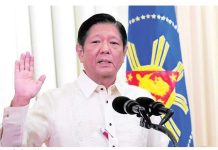[av_one_full first min_height=” vertical_alignment=” space=” custom_margin=” margin=’0px’ padding=’0px’ border=” border_color=” radius=’0px’ background_color=” src=” background_position=’top left’ background_repeat=’no-repeat’ animation=”]
[av_heading heading=’FAITH, HOPE & CHARITY | Financial inclusion’ tag=’h3′ style=’blockquote modern-quote’ size=” subheading_active=’subheading_below’ subheading_size=’15’ padding=’10’ color=” custom_font=”]
BY IKE SEÑERES
[/av_heading]
[av_textblock size=” font_color=’custom’ color=”]
Thursday, April 13, 2017
[/av_textblock]
[av_textblock size=” font_color=” color=”]
FOR ALL intents and purposes, financial inclusion is really just a synonym of poverty reduction, because one is really the offshoot of the other. We can reduce poverty by including more people in the financial mainstream, and we can include more people in that mainstream by reducing poverty.
Please be careful to note, however, that we are not talking about poverty alleviation that is like applying ointment to a boil; we are talking about removing the boil itself. Using that analogy, we could actually say that we should be fully eradicating poverty instead of merely reducing it, but perhaps we should just stop while we are ahead.
The Sustainable Development Goals (SDGs) of the United Nations (UN) has actually set the eradication of extreme poverty by the year 2030, obviously carefully inserting the word “extreme” as a qualifier. In the Philippine context, we could say that that is like “laying the predicate” just in case they would fall short of their goals.
For the record, however, the UN has already reported that it has met the global goal of reducing extreme poverty by half as of 2015, the last year of measuring the success or failure of the Millennium Development Goals (MDGs).
As a founding member and signatory to the charter of the UN, we only have about thirteen years to achieve our own national target, noting that we already failed to meet our earlier MDG target of reducing extreme poverty by half on or before the year 2015.
Aside from poverty reduction, the term “financial inclusion” actually has several other synonyms and related meanings, and among these are empowering the unbanked and access to credit. It is sad to note that access to credit has become a chicken and the egg problem. That is so because the banks will not give credit to those who do not have a credit history.
The problem is, the “financially excluded” (financially challenged) people could not establish a credit history unless the banks would start lending to them. That is actually the reason why the “unbanked” people would run instead to the usurers, because they do not require a credit history.
In reality, many of those who are “financially excluded” are not really poor. They are “excluded” so to speak, because they do not have a credit history, aside from not having bank accounts. To some extent, those who have to “suffer” having only prepaid phones could not get postpaid accounts because they could not present a credit record and a bank account.
That does not mean, however, that they do not have money, because they are able to load their phones as often as necessary, except that they do not have the advantage of paying after their usage. In the overall, however, it may be costing them more money to buy their prepaid loads compared to those who are have postpaid accounts.
As another example, those who are selling food items in the public markets are not really poor, but they have no credit history and have no bank accounts, and because of that, their cost of money is higher. Logically, their logical way out is to establish a credit history so that sooner or later, they could open a bank account.
In truth, however, they may already have some proofs of billings that may already be a basis for establishing their credit history, but for the most part, many of them may not know how to go about it. That is the reason why I say that the “cure” for “financial inclusion” is no other than financial education.
To some extent, it could be said that “financial inclusion” may actually have a double meaning, in the sense that it could mean being “excluded” from the mainstream of moneymaking opportunities such as investing in stocks, bonds and mutual funds, among others.
While these opportunities may actually be available for everyone, the awareness for these may be rather low, as we go down in the social ladder. In a manner of speaking, it could be said that the “cure” for the lack of awareness could also be financial education. It may be possible to include these topics in the elementary and high school curricula, but other than that, it could also be included in adult education.
Aside from earning money from these opportunities, there is also a need to make the general public aware of ways to save money and also ways to avoid spending more money unnecessarily, more than what they would ordinarily spend for.
Generally speaking, that is the purpose of buying insurance and college plans, among others. As far as I know, there is only one provider of an affordable memorial services package, and that is the Dignified Memorial Services (DMS) Corporation founded by Dr. Rick Fulgencio. Their package costing 3,500 pesos per year includes all funeral services except the memorial lot. (iseneres@yahoo.com/PN)
[/av_textblock]
[/av_one_full]







